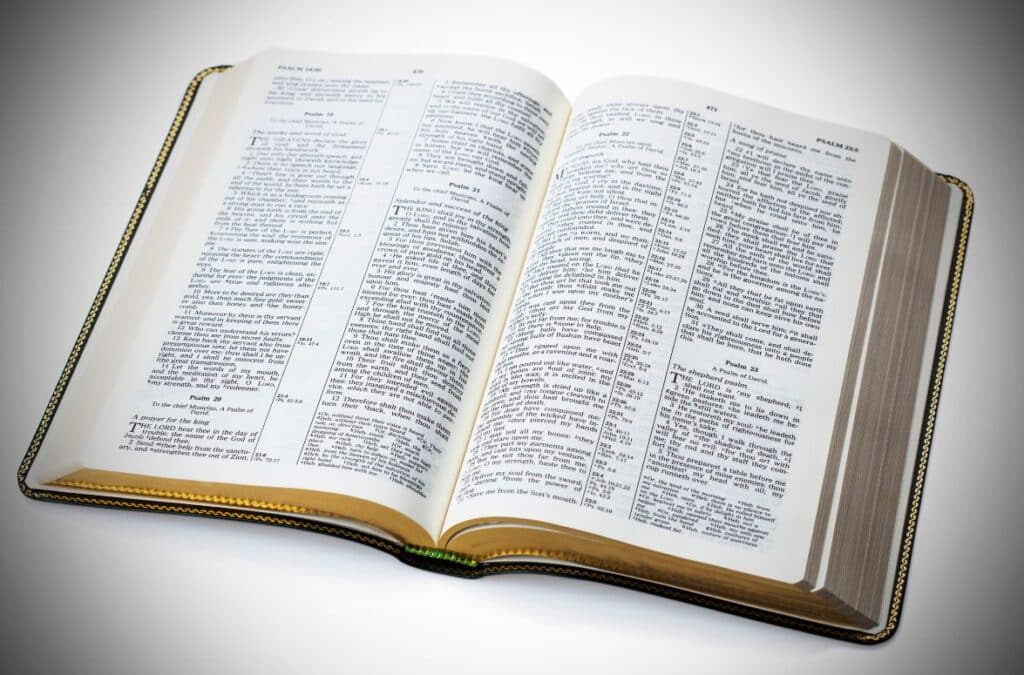In the tapestry of human history, few books have woven such profound influence as the Bible. Whether a source of spiritual guidance or a literary masterpiece, many have found themselves pondering the sheer magnitude of its contents. The question arises: How many pages are in the Bible?
Beyond its chapters and verses, the answer unveils not just a numerical count but a journey through millennia of faith, wisdom, and the written word.
Let’s dive right into answering the question of how many pages are in the Bible.
Table of contents
How many pages are in the Bible?
The number of pages in the Bible can vary significantly depending on the version, translation, and formatting. Here’s a general overview of the page count for different versions of the Bible:
King James Version (KJV):
The KJV Bible typically has around 1,200 to 1,500 pages, depending on factors such as font size, paper quality, and any additional content like maps or commentary.
New International Version (NIV):
The NIV Bible is often similar in length to the KJV, ranging from approximately 1,100 to 1,500 pages.
English Standard Version (ESV):
The ESV Bible is comparable in length to the KJV and NIV, with an average page count of around 1,100 to 1,500 pages.
Catholic Bible:
Catholic Bibles typically include additional books known as the Deuterocanonical books. As a result, Catholic Bibles tend to be longer, often exceeding 1,500 pages.
Study Bibles:
Study Bibles, which include commentary, notes, and references, can have varying lengths. Some may have more than 2,000 pages due to the additional content.
Large Print Bibles:
Bibles with larger print, designed for easier reading, may have a lower word count per page but could still span a significant number of pages, depending on the font size and formatting.
Read also: Which Group is a Primary Supporter of Hunter Education?
Are all Bibles the same length?
No, not all Bibles are the same length. The length of a Bible can vary based on several factors, including the version, translation, publisher, font size, paper quality, and the inclusion of additional content such as maps, commentary, and study aids. Different denominations may also have variations in the number of books included in their Bibles.
For example:
Translation Differences:
Different translations, such as the King James Version (KJV), New International Version (NIV), English Standard Version (ESV), and others, can have varying lengths.
Denominational Differences:
Catholic Bibles typically include additional books known as the Deuterocanonical books, making them longer than Protestant Bibles.
Study Bibles:
Bibles designed for study purposes often include additional content, resulting in a larger physical size and more pages.
Large Print Bibles:
Bibles with larger print may have fewer words per page but could still be physically larger, affecting the total page count.
When selecting a Bible, it’s essential to consider these factors to choose a version and format that aligns with personal preferences and reading needs. The diverse range of available editions caters to various preferences and requirements within the broader context of religious practice and study.
Check out:: How Tall is Trippie Redd? Everything About the Rapper
What are the smallest and largest books in the Bible?
The smallest and largest books in the Bible are determined by the number of chapters or verses they contain:
Smallest Book:
The Book of Obadiah is the smallest book in the Bible. It consists of only one chapter, making it the shortest book in terms of content.
Largest Book:
The largest book in the Bible is the Book of Psalms. Psalms is an extensive collection of poems, prayers, and hymns and is known for its diversity of content. It contains 150 chapters, making it the longest book in the Bible.
These distinctions are based on the content of the books rather than their physical size. Each book in the Bible serves a unique purpose, contributing to the overall narrative and teachings found in this sacred text.
See also: How Tall is Jack Skellington? All the Facts and Details
Conclusion
Each page carries the weight of centuries of faith, culture, and wisdom. The Bible, in its various translations and interpretations, stands not only as a literary work but as a testament to the enduring impact of the written word on the human spirit.
The pages, though counted, hold immeasurable significance in the hearts and minds of those who turn them in search of guidance, solace, and inspiration.
Frequently Asked Questions
The exact number of pages in the Bible can vary based on the version and format. On average, a standard Bible typically ranges from around 1,200 to 1,500 pages. However, this can differ based on factors such as font size, paper quality, and additional content like maps and commentary.
No, different versions and translations of the Bible can vary in length. Protestant Bibles often have fewer books than Catholic Bibles, leading to differences in the total number of pages. Additionally, the inclusion of study aids and commentaries can affect the overall length.
The Book of Psalms is the longest book in the Bible. It consists of 150 chapters, encompassing a wide range of poetic expressions, prayers, and hymns.
Yes, many publishers offer Bibles with larger print to accommodate readers with visual challenges. These editions may have fewer words per page, resulting in a larger physical size while maintaining the same content.
The smallest book in the Bible is the Book of Obadiah, consisting of only one chapter. The largest book is the Book of Psalms, known for its extensive collection of poems and prayers.
References
- amazon.com– How Many Pages are in the Bible
- wordcounter.net– How Many Pages are in the Bible
- christianityfaq.com– How Many Pages are in the Bible






